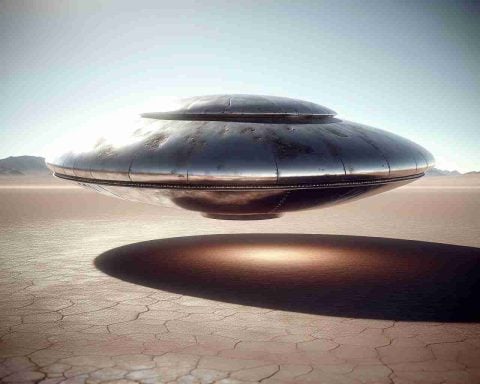- NASA has partnered with SpaceX to launch the Pandora mission, focusing on studying at least 20 known exoplanets.
- This mission falls under NASA’s Venture-Class Acquisition of Dedicated and Rideshare (VADR) contract, emphasizing affordability and efficiency.
- Pandora’s primary mission will last one year, during which it will observe each exoplanet ten times within 24-hour periods.
- The mission’s unique 45-centimeter-wide aluminum telescope will gather crucial near-infrared spectra and measure star brightness simultaneously.
- This initiative aims to enhance the understanding of how stellar activity impacts exoplanet atmospheres, complementing data from the James Webb Space Telescope.
- Pandora exemplifies a collaboration between NASA’s Goddard Space Flight Center and Lawrence Livermore National Laboratory.
NASA has just taken a giant leap forward in the quest to uncover the mysteries of distant worlds. The agency has chosen SpaceX to launch the groundbreaking Pandora mission, set to explore a minimum of 20 known exoplanets and their surrounding stars. This ambitious mission aims to decipher the impact of stellar changes on the atmospheres of these intriguing planets.
Part of NASA’s innovative Venture-Class Acquisition of Dedicated and Rideshare (VADR) contract, Pandora is designed for efficiency and affordability, with a potential contract value of up to $300 million over the next five years.
During its one-year primary mission, Pandora will conduct a detailed study, observing each exoplanet ten times over 24-hour periods. This meticulous tracking will capture crucial data, especially during transits—the moments when a planet crosses in front of its star. Equipped with a 45-centimeter-wide aluminum telescope, Pandora will simultaneously measure the brightness of the stars and collect near-infrared spectra of the transiting planets. This capability will grant scientists the ability to isolate stellar activity from planetary signals, greatly enriching the data collected by NASA’s James Webb Space Telescope.
This remarkable mission is a collaboration between NASA’s Goddard Space Flight Center and the Lawrence Livermore National Laboratory, showcasing a commitment to using smaller, cost-effective hardware for astrophysical exploration.
With Pandora on the launchpad, the universe’s secrets are closer than ever. Get ready for a cosmic adventure that could redefine our understanding of habitable worlds!
Unlocking the Cosmos: NASA’s New Pandora Mission to Unveil Exoplanet Mysteries!
NASA has recently taken a significant step in exoplanet research with the selection of SpaceX to launch the Pandora mission. This mission aims to explore at least 20 known exoplanets and study how stellar activities influence their atmospheres. Here’s a deeper look into what the Pandora mission entails, its specifications, and its potential impact on our understanding of distant planetary systems.
Mission Overview and Objectives
The Pandora mission is part of NASA’s Venture-Class Acquisition of Dedicated and Rideshare (VADR) program, emphasizing financial prudence and operational efficiency. With a projected budget of around $300 million over the upcoming five years, the mission stands out for its affordability without compromising scientific integrity.
Specifications and Technology
– Telescope Size: The mission utilizes a 45-centimeter-wide aluminum telescope, designed to precisely measure the brightness of stars while simultaneously collecting near-infrared spectra from transiting exoplanets. This dual capability allows scientists to distinguish between effects due to stars and those related to the planets.
– Mission Duration: The primary mission spans one year with plans to observe each targeted exoplanet ten times within 24-hour observation windows.
Potential Scientific Contributions
By focusing on the transits—periods when planets pass in front of their parent stars—Pandora can glean insights into planetary atmospheres that can help astronomers determine habitable conditions. Such detailed observations may complement and enhance the findings from NASA’s James Webb Space Telescope.
Economic and Technological Innovations
Pandora embraces a modern approach to space exploration, prioritizing cost-effective hardware while ensuring robust scientific outcomes. This method could potentially serve as a model for future missions, as it demonstrates that valuable astrophysical research can be conducted efficiently.
Related Aspects
– Sustainability: The use of smaller spacecraft like Pandora promotes sustainability in terms of reduced costs and resource consumption in space missions.
– Market Trends: The collaboration with SpaceX reflects an increasing trend towards public-private partnerships in space exploration.
– Predictions: Astrophysicists anticipate that findings from the Pandora mission could reveal crucial information about the habitability of exoplanets and perhaps lead to the discovery of life beyond Earth.
Frequently Asked Questions
1. How does the Pandora mission differ from previous exoplanet missions?
Pandora utilizes advanced observational technology focused on near-infrared spectra and emphasizes a cost-effective approach, aiming for ten observations per planet. This contrasts with previous missions that may have relied on larger instruments or had larger budgets.
2. What specific data will scientists collect with Pandora?
The mission will collect brightness measurements of the stars and near-infrared spectra of the planets. This data will help distinguish the atmospheric composition of the planets from their parent stars’ activities.
3. Who is involved in the Pandora mission?
The Pandora mission is a collaboration between NASA’s Goddard Space Flight Center and the Lawrence Livermore National Laboratory, reflecting multidisciplinary efforts in space exploration.
For more insight about NASA’s missions and exoplanet research, visit NASA.




















